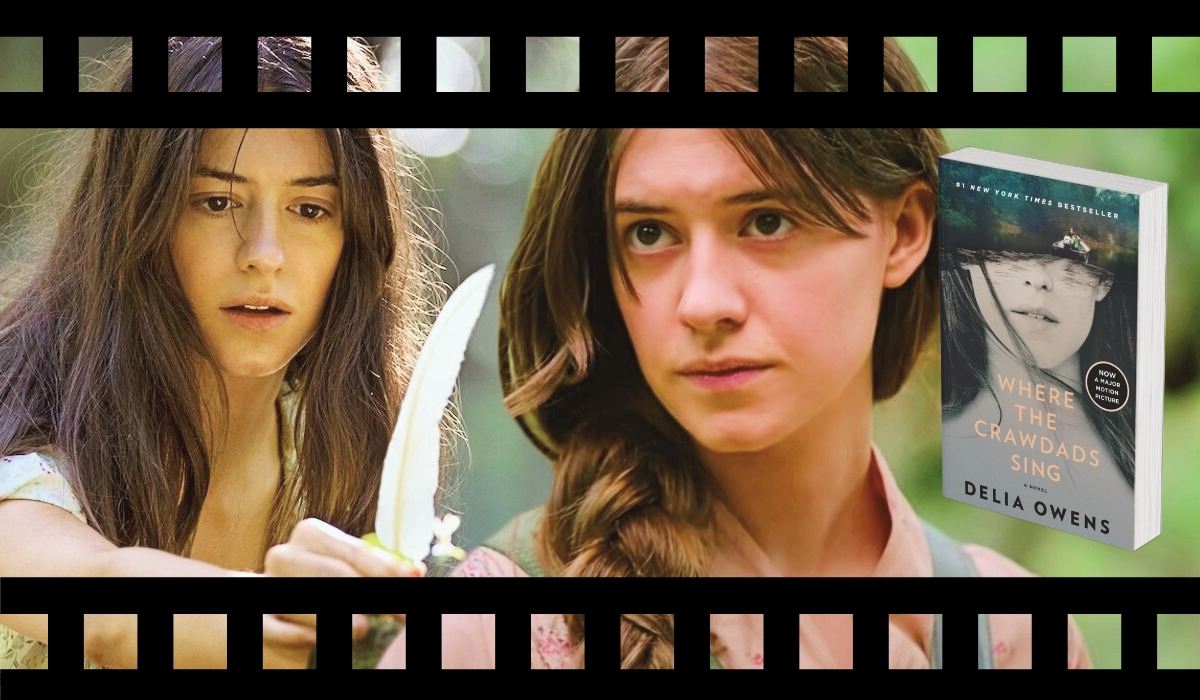Where the Crawdads Sing became both a bestselling novel and a successful film adaptation, captivating audiences with its combination of mystery, romance, and survival themes. At the heart of the story lies Kya Clark, a young woman growing up in isolation within the marshes of North Carolina.
Readers and viewers alike have often wondered if her story draws upon actual events or if it is entirely fictional.
Looking at the fine line between creative storytelling and real-life influence helps clarify why the narrative resonates so strongly.
The Fictional Roots
Where the Crawdads Sing does not draw upon any confirmed real-world case. No legal records or historical accounts tell of a young woman living in the marshes of North Carolina, accused of killing a man, and later being acquitted despite secretly being guilty.
Kya Clark’s life is a product of Delia Owens’s imagination, crafted to feel authentic through vivid detail and emotional truth.
Part of the novel’s impact lies in how it reflects experiences that many people recognize in their own lives or in society at large. Themes such as neglect, endurance, and hidden moral struggles give the story a sense of credibility even though it is not grounded in documented history.
- Abandonment that forces individuals to adapt and survive against odds.
- Resilience in the face of isolation and judgment.
- Questions of morality when survival conflicts with the law.
- The pull of nature as both refuge and challenge.
These aspects make the novel believable and emotionally powerful, creating an atmosphere that feels authentic even without factual roots.
The Story of Kya Clark

Kya Clark’s journey begins in abandonment. Her family slowly drifts away, leaving her to fend for herself in the marsh.
As a child with no support system, she learns to survive through her instincts and resourcefulness, forming a rare bond with the natural environment that surrounds her.
That bond both isolates her from the town community and provides her with the strength to endure.
Kya’s later life brings her into relationships that mark both tenderness and conflict. Her romance with Chase Andrews becomes dangerous, reflecting how trust can shift into betrayal. When Chase dies under suspicious circumstances, Kya is accused of his murder.
Society views her as an outsider and is quick to judge, amplifying her trial into a spectacle. She is acquitted in court, but readers ultimately discover that she was responsible for his death all along.
Her story resonates because it captures layered human emotions.
- Loneliness that shapes identity and behavior.
- Emotional resilience in the face of rejection.
- Survival instinct overriding social expectations.
- A blurred moral line between justice and crime.
Kya’s complexity makes her both sympathetic and unsettling, creating one of the most memorable characters in recent literature.
The Real-Life Inspiration
Even though Where the Crawdads Sing is not based on a true story, there are several influences that made it into the book and later into the movie.
@amyhart #AD My favourite book has been turned into a film! Where The Crawdads Sing is out in cinemas from 22nd July from @SonyPictures.UK and to celebrate the release, I am re-reading the book in my happy place, and wanted to share my favourite passage with you. #CrawdadsMovie #booktok ♬ original sound – Amy Hart
Conservationist Background
Before becoming a novelist, Delia Owens lived in Africa with her then-husband Mark Owens. Together, they dedicated themselves to wildlife conservation in Zambia, particularly focused on protecting elephants from poachers.
Their work became the subject of ABC’s 1996 documentary Deadly Game: The Mark and Delia Owens Story.
Isolation in the African wilderness shaped Delia’s personal and professional life. Harsh environments, limited human contact, and constant challenges with survival mirrored the conditions she later portrayed in her fiction.
Elements of that reality seeped into the fictional marshlands of North Carolina.
- Living in remote, isolated camps for years.
- Constant exposure to the dangers of poaching conflicts.
- A reliance on nature as both a livelihood and emotional anchor.
Her connection with wilderness survival, justice, and moral conflict later found echoes in the novel’s narrative structure.
The Unsolved Killing
During the ABC documentary, cameras captured the shooting of an alleged poacher. The killing was never fully resolved, though Christopher Owens, Delia’s stepson, was implicated by some reports.
He was never formally charged, but Zambian authorities opened a homicide investigation that remains unresolved to this day.
That unresolved death continues to shadow Delia Owens’s reputation. Even though she has denied direct involvement, the incident remains linked in public discussion to her later work.
Parallels between the fictional killing in her novel and the real-life incident cannot be ignored.
@etalkctv Did you know the author of #wherethecrawdadssing is still wanted for questioning in Zambia, Africa? 😳🤯 #deliaowens #fyp #wherethecrawdadssingmovie #wherethecrawdadssingbook ♬ original sound – etalk
Thematic Parallels Between the Book and the Real-Life Case
Several parallels between Kya’s fictional life and Delia Owens’s real-world experiences stand out in correlation with Where the Crawdads Sing.
- Justice and morality: Kya kills Chase Andrews and is portrayed in a sympathetic light. Similarly, debates around the killing of the poacher touch on questions of justified violence in the name of protection.
- Isolation: Kya survives in solitude within the marsh, much like Owens endured long stretches of seclusion in the African wilderness.
- Nature as sanctuary: Kya’s marsh serves as parent, protector, and teacher. For Owens, the wild provided both refuge and meaning in life.
These parallels add depth to the story, making it resonate on multiple levels with audiences familiar with both the novel and Owens’s history.
Authorial Intent or Subconscious Influence?

Speculation about Delia Owens’s intent has followed the success of the novel. Did she consciously draw upon her own life when creating Kya Clark?
Owens has firmly denied that her novel is autobiographical. She maintains that it is entirely fiction and unrelated to the poacher’s death in Zambia.
Still, it is impossible to separate an author entirely from her lived experiences. Creative work often emerges from subconscious influence, where memory and imagination blend together.
Owens’s years in isolation, her constant contact with moral conflict, and her reliance on nature for identity may have naturally shaped her storytelling.
- Isolation shaping how she viewed human resilience.
- Conflict with authority and law leaving imprints on her sense of justice.
- Nature as a recurring symbol of strength and belonging.
Kya’s fictional world feels authentic because it may carry fragments of real experience, even if Owens never intended it that way.
Final Thoughts
Where the Crawdads Sing cannot be classified as a true story, yet it holds undeniable ties to real experiences and moral debates.
Kya Clark’s tale combines crime, survival, and personal resilience, while Delia Owens’s past adds a shadow of reality that makes the narrative linger.
Fiction and lived experience blur together, creating a story that challenges readers to think about justice, morality, and the way personal history shapes art.
Read more: Find out about celebrities’ personal lives and their net worths, like, for example, who is Sally Struthers and what is her net worth today?
Dave Mustaine is a business writer and startup analyst at Sharkalytics.com. His articles break down what happens after the cameras stop rolling, highlighting both big wins and behind-the-scenes challenges.
With a background in entrepreneurship and data analytics, Dave brings a sharp, practical lens to startup success and failure. When he’s not writing, he mentors founders and speaks at entrepreneur events.

